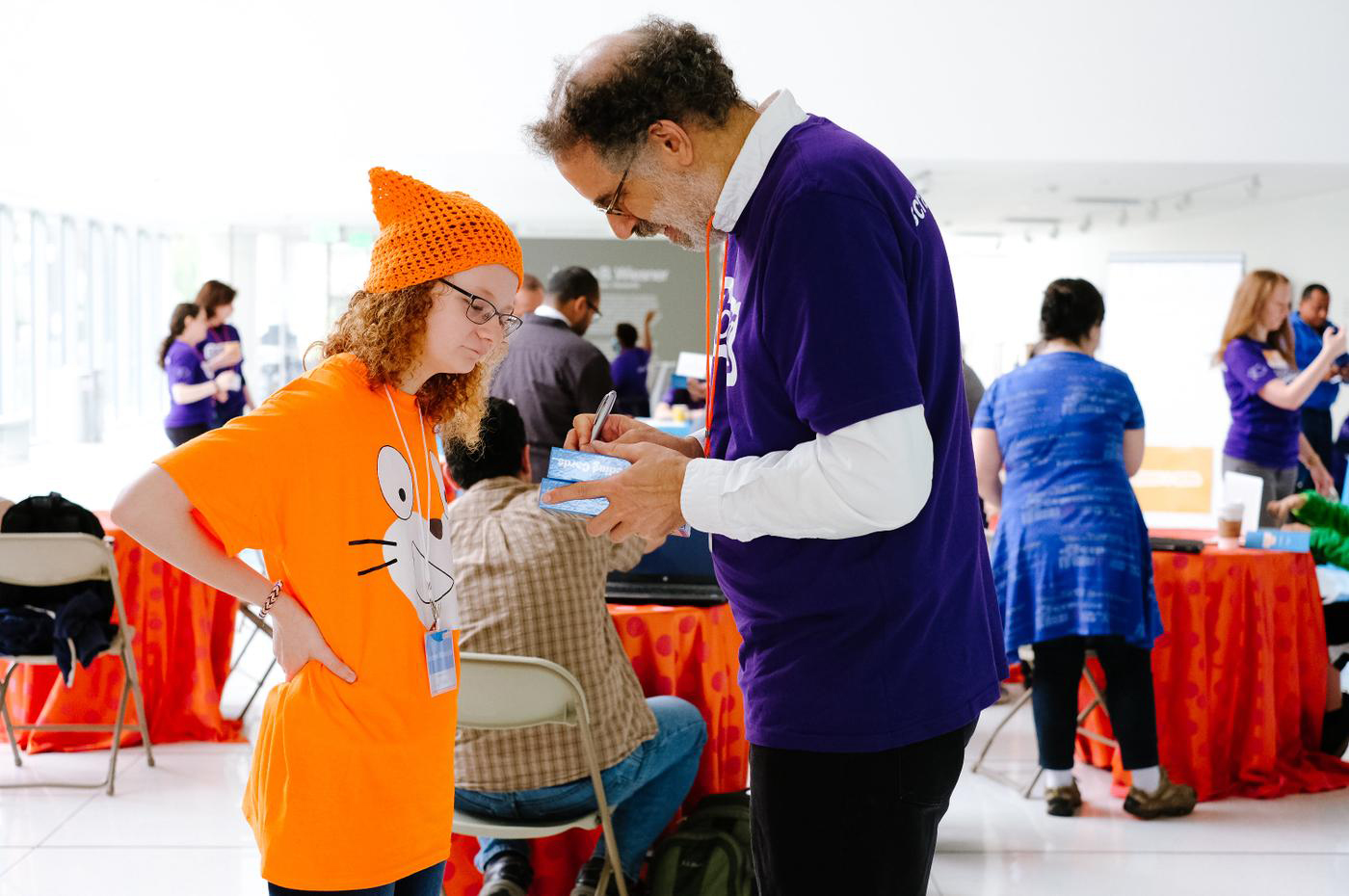Scratch Turns 10
-
-
Slice of MIT
Filed Under
Recommended

Video: produced by the MIT Media lab for Scratch's 10-year anniversary celebration.
Scratch, a free visual programming language developed at MIT, has become a widespread tool with more than 18 million users worldwide. The platform, which exposes children to the realm of computer programming, requires very little technological background or equipment aside from access to the Internet. And the tool just hit a huge milestone, celebrating its 10-year anniversary, officially making it older than many of its most ardent users. In the last 10 years, Scratchers have shared more than 22 million projects, with 30,000 new ones every day.
Scratch works by arranging a sequence of blocks to create projects. The range of projects is seemingly endless—kids can create animations of things like a dance party or a greeting card, games like hide-and-seek or a maze, or even music videos like Starfish Choir, where different colored starfish represent different notes on a piano.
“It was the first programming I’d ever done and it got me really interested in programming and I started to explore other programming languages,” says Sarah Otts, online community developer for the MIT Scratch Team. From then on out, Otts knew that she wanted to study computer science in college.
“Scratch is both a programming language and an online community where kids can create their own interactive stories and games and animations and share their creations with one another online,” says Scratch co-creator Mitchel Resnick SM ’88, PhD ’92, lead of MIT Media Lab's Lifelong Kindergarten group, where the platform originated. “Kids learn to think creatively, reason systematically, and work collaboratively, skills that are important to everybody in today’s society.”
Scratch, which is free and available online, is focused on providing the tools to help kids of all educational and demographic backgrounds. “Our ultimate goal is to help all children from all backgrounds to become truly fluent with new technologies,” says Resnick. “We want to help all children be able to design, create, invent, and express themselves with new technology.”
Over the course of 10 years, the Scratch team—which includes 20 staff members along with Resnick and Scratch co-creator and Media Lab research scientist Natalie Rusk—has continued to improve the platform. The group is backed by the Scratch Foundation, made up of companies, foundations, and individual donors that are invested in supporting Scratch’s accessible approach to coding. In 2013, they released Scratch 2.0, and Scratch 3.0 is expected to be released next year. The updated version will make creating on mobile devices and tablets more user friendly.
“My hope is for future versions of scratch is that we can continue to keep the child at the center of what we do and that we can continue to reach more and more children in the powerful ways that we already have,” says Andrew Sliwinski, director of design and engineering of the MIT Scratch Team.







